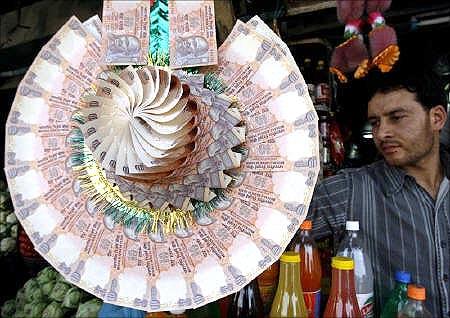While FMPs no longer offer the same short-term advantage, it is still a good product for the medium term.
 Retail investors and high networth individuals were especially disappointed when Finance Minister Arun Jaitley changed the taxation guidelines of fixed maturity plans (FMPs) in Union Budget 2014-15.
Retail investors and high networth individuals were especially disappointed when Finance Minister Arun Jaitley changed the taxation guidelines of fixed maturity plans (FMPs) in Union Budget 2014-15.
From being a product that offered double indexation (inflation index) benefits for a term of only 14 to 15 months (short term), the product suddenly became one in which the investor had to stay invested for at least three years (medium term), to get the indexation benefit.
In other words, it became less liquid and, also, if an investor wished to exit in less than three years, the capital gains would be added to the income and taxed according to the bracket.
The only difference between a fixed deposit and an FMP of a similar tenure, from the tax perspective, is that the indexation benefit will continue for the latter.
“The product, in its new avatar, is meant for investors who are seeking safe returns with a little tax advantage. The earlier tax benefit had many investors flocking for the product, but now there are fewer people entering it,” says the chief executive officer (CEO) of a mutual fund house.
But, fund houses have not completely given up on the product. In the past few weeks, a number of mutual fund houses have launched FMPs and few are proposing to launch them in the near future.
These include leading fund houses like HDFC Mutual Fund, Deutsche Mutual Fund, DSP BlackRock and others. These new schemes are close-ended income scheme for three years. There isn’t any load for investors.
Also, they are benchmarked against Crisil Composite Bond Fund Index for schemes having maturity of over 36 months.
Hemant Rustagi, CEO, WiseInvest, says it still makes sense for investors to put money in these schemes, especially ones who are seeking safety and no interest risk.
“Since the units of these schemes are expected to be held on to till maturity, it will be a low-risk, low-return product. And there are investors who seek this kind of product.”
Then, there is the tax benefit. Say, a person in the 30 per cent income tax bracket invests in a fixed deposit which is giving eight per cent annually for three years, the effective return for that person will be 5.6 per cent due to the tax.
In comparison, the same person investing in an FMP offering 7.5 per cent (though indicative returns cannot be announced by fund houses any more, but one can get an idea of the returns by seeing the portfolio) will get better returns because of the tax rate of 20 per cent after indexation benefit.
Obviously, people with lower income-tax levels will not benefit so much.
But, investors seeking the comfort of an exit before the scheme matures should not enter FMPs.
As these schemes are close-ended, the only way to exit before the tenure ends is through the stock exchange route.
And as these have little or no liquidity on stock exchanges, one might be forced to sell at a discount. And then, there will be the tax knock.
Ideally, this product should be repositioned in your portfolio as a medium-debt debt instrument.
If you have a goal such as the purchase of a property in the next few years and aren’t happy with the returns of bank fixed deposits, go for these schemes.












 © 2025
© 2025